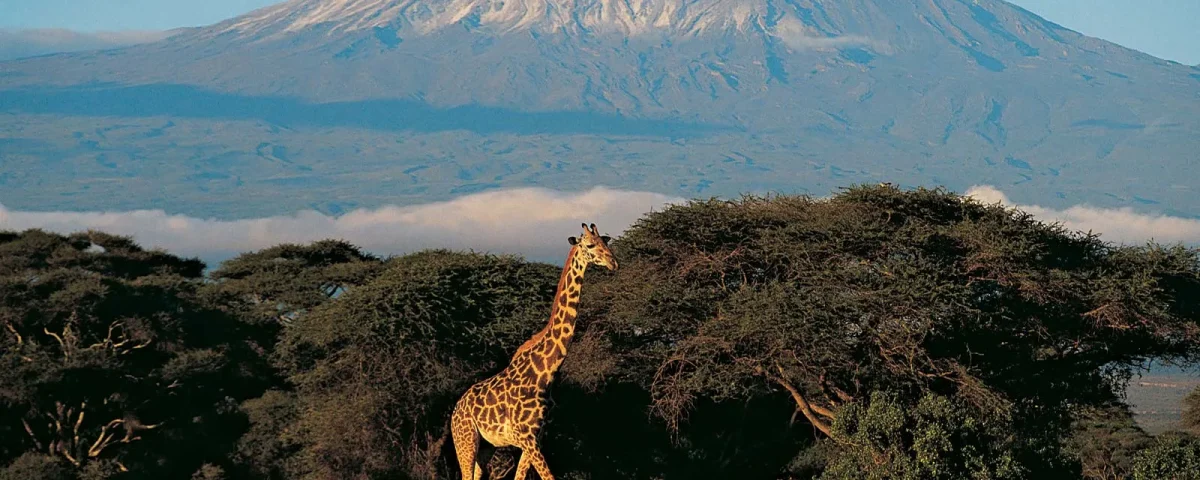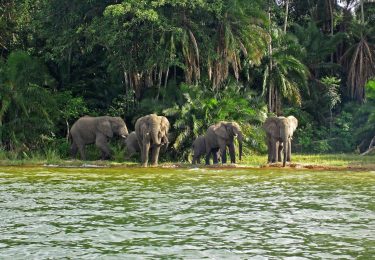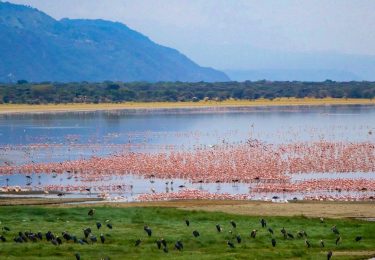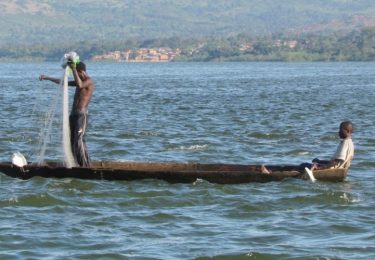- Home
- About Us
- Uganda safaris
- Long Safaris
- Short Safaris
- Day Short Safaris
- 1 Day Entebbe Botanical gardens weekend birding excursion
- I Day Entebbe City Tour
- 1 Day Jinja, Mabira, Ssezibwa Tour
- 1 Day Jinja Source of the Nile tour
- Lake Victoria Sunset Cruises
- 1 Day Kampala City Tour
- 1 Day Mabamba Shoebill Stork And Birding Tour
- 1 Day Makanaga Shoebill And Birding Trip
- 1 Day Ngamba Island Boat And Chimpanzee Excursion
- Other Tours
- Gorilla Safaris
- Uganda Gorilla safaris
- 4 Days Mgahinga Bwindi gorilla and golden monkey trekking safari
- 3 Days Mgahinga Gorilla trekking safari
- 5 Days Mgahinga Gorillas, Golden Monkey And Lake Bunyonyi Tour
- 5 Days Gorillas And Wildlife, L.Mburo, Bwindi and L. Bunyonyi
- 8 Days Wildlife, Gorillas, Golden Monkeys Trip
- 8 Days Gorillas Chimpanzee and wildlife Trekking Tour
- 9 Days Kidepo Valley National park and Bwindi Gorilla Safari. Wildlife and gorillas
- 11 Days Gorilla And Chimpanzee Tracking and wildlife Safari
- Rwanda Gorilla Safaris
- Uganda Gorilla safaris
- National Parks
- Kidepo Safaris
- Queen Elizabath Safaris
- Lake Mburo Safaris
- Mgahinga
- Mgahinga Gorilla National Park
- 3 Days Mgahinga Gorilla trekking safari
- 4 Days Mgahinga Bwindi gorilla and golden monkey trekking safari
- 5 Days Rwand-Uganda Gorilla, Golden Monkey trekking trip
- 5 Days Mgahinga Gorillas, Golden Monkey And Lake Bunyonyi Tour
- 8 Days Wildlife, Gorillas, Golden Monkeys Trip
- Our Blog
- Other Safaris
- Home
- About Us
- Uganda safaris
- Long Safaris
- Short Safaris
- Day Short Safaris
- 1 Day Entebbe Botanical gardens weekend birding excursion
- I Day Entebbe City Tour
- 1 Day Jinja, Mabira, Ssezibwa Tour
- 1 Day Jinja Source of the Nile tour
- Lake Victoria Sunset Cruises
- 1 Day Kampala City Tour
- 1 Day Mabamba Shoebill Stork And Birding Tour
- 1 Day Makanaga Shoebill And Birding Trip
- 1 Day Ngamba Island Boat And Chimpanzee Excursion
- Other Tours
- Gorilla Safaris
- Uganda Gorilla safaris
- 4 Days Mgahinga Bwindi gorilla and golden monkey trekking safari
- 3 Days Mgahinga Gorilla trekking safari
- 5 Days Mgahinga Gorillas, Golden Monkey And Lake Bunyonyi Tour
- 5 Days Gorillas And Wildlife, L.Mburo, Bwindi and L. Bunyonyi
- 8 Days Wildlife, Gorillas, Golden Monkeys Trip
- 8 Days Gorillas Chimpanzee and wildlife Trekking Tour
- 9 Days Kidepo Valley National park and Bwindi Gorilla Safari. Wildlife and gorillas
- 11 Days Gorilla And Chimpanzee Tracking and wildlife Safari
- Rwanda Gorilla Safaris
- Uganda Gorilla safaris
- National Parks
- Kidepo Safaris
- Queen Elizabath Safaris
- Lake Mburo Safaris
- Mgahinga
- Mgahinga Gorilla National Park
- 3 Days Mgahinga Gorilla trekking safari
- 4 Days Mgahinga Bwindi gorilla and golden monkey trekking safari
- 5 Days Rwand-Uganda Gorilla, Golden Monkey trekking trip
- 5 Days Mgahinga Gorillas, Golden Monkey And Lake Bunyonyi Tour
- 8 Days Wildlife, Gorillas, Golden Monkeys Trip
- Our Blog
- Other Safaris
MOUNTAIN KILIMANJARO

MOUNTAIN MOROTO
August 8, 2024
BULAGO ISLAND
September 19, 2024Mount Kilimanjaro, revered as the “Mountain of Greatness,” stands tall as a majestic dormant volcano in Tanzania, holding the distinction of being the highest peak in Africa and the world’s tallest freestanding mountain, rising independently above the surrounding landscape to an elevation of 5,895 meters above sea level and approximately 4,900 meters above its plateau base.
The origin and meaning of the name “Mountain Kilimanjaro” are shrouded in mystery, with several theories attempting to explain its derivation. One theory suggests that the name is a combination of the Swahili word “Kilima,” meaning mountain, and the KiChagga word “Njaro,” loosely translated as whiteness, possibly referring to the mountain’s snow-capped peak. Another theory proposes that Kilimanjaro is a Europeanized pronunciation of a KiChagga phrase meaning “we failed to climb it,” hinting at the mountain’s formidable and intimidating presence.
Kilimanjaro, also known as a stratovolcano, is a majestic mountain composed of three distinct volcanic cones: Kibo, Mawenzi, and Shira. Kibo, the tallest and central cone, is the summit of the mountain and is considered dormant, having last erupted 360,000 years ago, with the potential for future activity. In contrast, Shira and Mawenzi are extinct volcanic formations. The highest point on Kibo’s crater rim is aptly named “Uhuru,” the Swahili word for freedom, marking the mountain’s highest peak and a symbol of triumph for climbers who reach its summit.
Mount Kilimanjaro’s unique geography creates a microclimate, where its middle and lower slopes receive significantly more rainfall than the surrounding plains. The southern slopes are the wettest, receiving ample precipitation that feeds River Pangani, which flows southward, parallel to the Usambara Mountains, and is supplemented by eastern streams that flow into River Galana, creating a lush and verdant valley that contrasts with the drier surrounding landscape.
Kilimanjaro stands as the fourth most topographically prominent peak on Earth, boasting an impressive presence. In 1973, the mountain and its six surrounding forest corridors were designated as Kilimanjaro National Park, aiming to safeguard its exceptional environment and acknowledge its significance as a premier climbing destination. This prestigious park was further recognized as a United Nations Educational, Scientific and Cultural Organization (UNESCO) World Heritage site in 1987, highlighting its outstanding universal value. Spanning an area of approximately 75,575 hectares, the park protects the world’s largest freestanding volcanic mass, preserving its natural wonders for future generations.
Mount Kilimanjaro offers seven official trekking routes for ascending and descending the mountain, each with its unique characteristics and duration. The routes include Machame (6-7 days), Marangu (5-6 days), Lemosho (6-8 days), Mweka, Shira, Rongai, and Umbwe. Notably, the Lemosho route can be extended via the Western-Breach, allowing for a summit approach from the western side, which is more secluded and avoids the traditional midnight ascent. The Rongai and Marangu routes are considered the easiest camping options, while the Northern Circuit routes require a minimum of nine days. Each route offers a distinct experience, catering to different preferences and climbing styles.
The areas surrounding Mount Kilimanjaro, particularly the rainforest zone, are home to a diverse range of wildlife. The Kilimanjaro rainforest, especially around the Big Forest Camp on the Lemosho route, is inhabited by various species such as the blue monkey, white-necked raven, colobus monkey, bush baby, and four-striped mice. In addition to these animals, the rainforest zone also supports a variety of insects like spiders, ants, and leeches, as well as rats, snakes, and birds. The zone’s unique ecosystem also sustains an array of plant life, including massive tree ferns, sycamore trees, junipers, and moss, creating a lush and vibrant environment that thrives in the lower altitudes, whereas the higher elevations cannot support plant or animal life due to the harsh conditions.
Although Mount Kilimanjaro is considered one of the least dangerous mountains of its size on Earth, climbing it still poses significant risks that cannot be ignored. Every year, several climbers succumb to altitude-related illnesses and other hazards, resulting in fatalities. Common risks include hypothermia, dehydration, acute mountain sickness (AMS), high-altitude pulmonary edema (HAPE), and high-altitude cerebral edema (HACE), among others. It’s essential for climbers to be aware of these risks, take necessary precautions, and ascend with experienced guides or tour operators to minimize the dangers and ensure a safe and successful climb.
Despite its shrinking glaciers and ice fields, Mount Kilimanjaro remains home to the largest ice fields in Africa. During the early weeks of August, snowfall is a regular occurrence, with an average of two to three snowy days per week, and a forecast model average snowfall of 1.6 inches for the week. Notably, the Northern Ice Field, which is the largest remaining body of ice on the mountain, covered an area of 0.95 square kilometers when last measured in 2007. This icy landscape is a striking feature of the mountain’s high-altitude environment, and its preservation is crucial for maintaining the delicate ecosystem and water sources that rely on it.
A detailed analysis of six cores retrieved from the rapidly shrinking ice field were found on top of Mount Kilimanjaro and it shows that these tropical glaciers began to form about 11‚700 years ago. The cores also yielded remarkable evidence of three catastrophic drought that plagued the tropics 8‚300, 5‚200 and 4‚00 years ago.
The weather at Uhuru Point, the summit of Mount Kilimanjaro, is extreme and unpredictable, with nighttime temperatures ranging from -7 to -20 degrees Celsius (20 to -20 degrees Fahrenheit) due to the mountain’s great height, which creates its own microclimate. However, the wind chill factor can make the felt temperature plummet to as low as -40 degrees Celsius or Fahrenheit, posing significant risks to climbers. The mountain’s snowfall is primarily driven by winds carrying moisture from the ocean, which rise, cool, and condense upon hitting the mountain, forming clouds and precipitation in the form of rain and snow. Two main wind patterns influence the weather on Mount Kilimanjaro: the south-east trade winds and the north-east anti-trade winds, which shape the mountain’s unique and dynamic weather conditions.
Mount Kilimanjaro’s slopes are drained by an extensive network of rivers and streams, particularly on the southern side, which receives more rainfall and experiences heavier erosion. Above 1,200 meters, the mountain’s watercourses are more pronounced, but below this altitude, increased evaporation and human water usage significantly reduce the water flows. The mountain’s eastern and southern sides are drained by two major rivers: River Lumi and River Pangani, respectively, which play a crucial role in shaping the surrounding landscape and supporting the local ecosystem.
WHAT TO DO IN MOUNT KILIMANJARO NATIONAL PARK
Mountain climbing
Mountain climbing is the most popular activity on Mount Kilimanjaro, offering an exhilarating experience like no other. As Africa’s highest free-standing mountain, Kilimanjaro presents a thrilling adventure, allowing climbers to ascend to various peaks, including the snow-capped Kibo Peak, the highest point, which offers breathtaking views of surrounding towns and landscapes. Additionally, climbers can tackle Shira Peak, the oldest and most eroded peak, which forms a plateau teeming with spectacular grasslands, diverse plant species, and an abundance of wildlife, making for an unforgettable experience.
Canoeing
Visitors to Mount Kilimanjaro National Park can enjoy a serene and guided canoe trip on Lake Momela, accompanied by knowledgeable guides. As you paddle across the lake, take in the stunning views of the surrounding forest, bush, and grassland, with the majestic Mount Meru visible to the west. The lake is teeming with an incredible array of wildlife, including buffaloes, waterbucks, duikers, hippos, giraffes, and zebras, while the birdlife is equally impressive, with species such as flamingos, pelicans, Egyptian geese, great crested grebe, southern pochards, maccoa ducks, and African jacanas, among others, adding to the lake’s vibrant ecosystem and making for a truly unforgettable experience.
Birding
Mount Kilimanjaro National Park is a haven for bird enthusiasts, boasting over 150 species of birds, comprising both resident and migratory populations. The park’s diverse avifauna includes the resident black-shouldered kite, blue-napped mousebird, white-necked raven, long-tailed trogon, African fish eagle, Gabar goshawk, African pygmy kingfisher, white-checked barbet, red-capped robin chat, and grey hornbill, among others. The best time for birding in the park is from November to April, when migratory birds flock to the area, offering a thrilling experience for birdwatchers and nature lovers alike.
Guided nature walks
Guided nature walks on the slopes of Mount Kilimanjaro offer a unique opportunity to explore the Mountain Forest canopy, where you can encounter a variety of primates, including the red-tailed monkey, black and white colobus monkey, and olive baboon. As you walk, you’ll also have the chance to discover a diverse array of plant species, and take in the stunning panoramic views of the surrounding Chagga farmlands and neighboring towns. With a knowledgeable guide leading the way, you’ll gain a deeper appreciation for the region’s natural beauty and rich biodiversity.
Wildlife
While Mount Kilimanjaro National Park may not be as renowned for its wildlife as other Tanzanian national parks, the Shira plateau plains still offer opportunities to spot a variety of wild animals during a safari. Some of the species you may encounter include vervet monkeys, honey badgers, black and white colobus monkeys, bushbabies, genet cats, aardvarks, elands, baboons, elephants, and four-striped mice. Although the wildlife population may be smaller compared to other parks, the unique landscape and diverse ecosystems of Mount Kilimanjaro still provide a fascinating setting for wildlife enthusiasts to explore.
Camping
Immerse yourself in the wilderness by camping at one of the 32 designated campsites along the second hiking route on Mount Kilimanjaro. This unique experience offers an exclusive bush adventure, with comfortable accommodations and amenities such as bush toilets. Savor delicious meals tailored to your hiking needs, and unwind amidst the stunning natural beauty of the mountain. Camping on Kilimanjaro provides an unforgettable opportunity to connect with nature and recharge for the next day’s hike.
Picnicking
Mount Kilimanjaro National Park offers 13 picturesque picnicking sites, perfect for enjoying a meal amidst the unspoiled wilderness. Some of the scenic picnic spots include Last Water, Daraja Refu, Wona, Kilimamchele, Jiwe la Mbula, and Machame Half Way, among others. Remember to pack lunch boxes and take advantage of these serene locations to refuel and recharge while soaking in the breathtaking surroundings. Whether you’re looking for a relaxing break or a chance to take in the stunning views, the park’s picnicking sites have something to offer.
Cycling
Take your safari to the next level by cycling to the highest peak of Mount Kilimanjaro via the Kilema route, an unforgettable and exhilarating experience that comes with an additional fee. This activity offers a unique perspective on the mountain’s rugged terrain and exposes you to the picturesque farmlands of the Chagga people. To ensure a safe and enjoyable experience, it’s essential to be an experienced mountain biker and to be accompanied by a knowledgeable tour guide. With three main cycling stations to explore, this adventure promises to be an thrilling addition to your Kilimanjaro safari.
Filming
Mount Kilimanjaro, Africa’s highest free-standing mountain, offers breathtaking panoramic views that make it an ideal location for filming adventure movies. Its rugged terrain and majestic scenery have inspired many filmmakers over the years, including the classic 1952 movie “The Snows of Kilimanjaro,” which won numerous awards. The mountain’s unique landscape and dramatic vistas continue to attract filmmakers and photographers seeking to capture its natural beauty and essence on camera, making it a premier destination for cinematic productions.
NOTE:
Mount Kilimanjaro National Park is open to visitors year-round, but the best times to visit are during the dry seasons, which occur from mid-June to October and December to mid-March. These periods offer optimal weather conditions, with clear skies, mild temperatures, and minimal rainfall, making it ideal for hiking, climbing, and wildlife viewing. Visiting during these times ensures a more comfortable and enjoyable experience, allowing you to fully appreciate the park’s stunning natural beauty and diverse wildlife.
How to get there
Mount Kilimanjaro National Park is conveniently located and easily accessible by road. The park is approximately a 2-hour drive from Arusha, a 1-hour drive from Moshi town, and a 1.5-hour drive from Kilimanjaro International Airport (JRO). This proximity to major towns and the international airport makes it simple for visitors to plan their trip and arrive at the park with ease, allowing for a seamless start to their Kilimanjaro adventure.





